Barbera d’Asti, an iconic red wine originating from the Piedmont region in northwestern Italy, has captured the hearts of wine enthusiasts worldwide. This versatile wine, known for its deep ruby color, high acidity, and low tannins, boasts a long-standing tradition and rich history dating back to the 13th century. Becoming a true symbol of Italian viticulture, Barbera d’Asti has evolved into various styles while maintaining its distinctive character.
The origin of Barbera d’Asti is deeply rooted in the Asti and Monferrato areas, which boast fertile soils and a favorable climate. The careful cultivation process combines both tradition and innovation, contributing to the wine’s outstanding quality and distinct taste profile. Barbera d’Asti is characterized by its lively acidity, full-bodied structure, and flavorful notes of red fruit, spice, and earthy undertones.
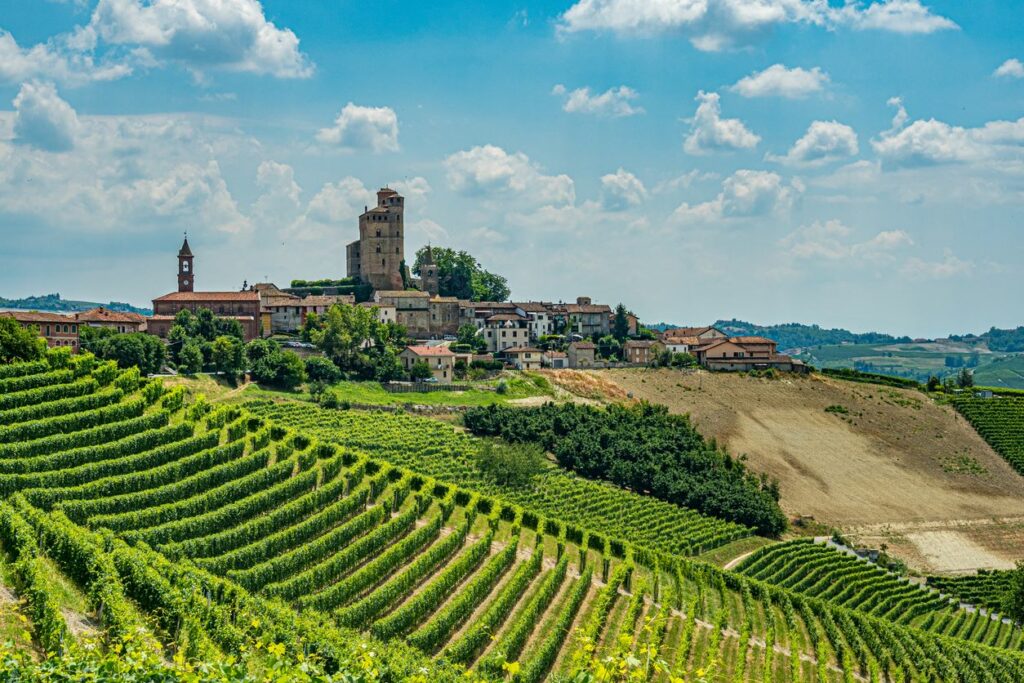
When it comes to food pairing, Barbera d’Asti showcases its versatility as it complements a wide range of dishes, from rich pasta to hearty stews and everything in between. Serving and storage recommendations, as well as answers to frequently asked questions, provide valuable insights for those looking to enhance their wine experience with Barbera d’Asti.
Key Takeaways
- Barbera d’Asti is a versatile, iconic red wine with a rich history in Italy’s Piedmont region.
- The wine’s distinctive taste profile features bright acidity, low tannins, and a full-bodied structure.
- Barbera d’Asti pairs well with a variety of dishes, showcasing its adaptability as a dining companion.
The Origin of Barbera d’Asti
Historical Background
Barbera d’Asti is a wine with deep roots in Italian history. Barbera, the grape variety used to make this wine, is believed to have originated in the Monferrato region of Piedmont, Italy. Historical records show that the grape was already well-established in the region by the 13th century. Its popularity grew over time as it spread across the Piedmont area and eventually became one of Italy’s most widely cultivated grape varieties.
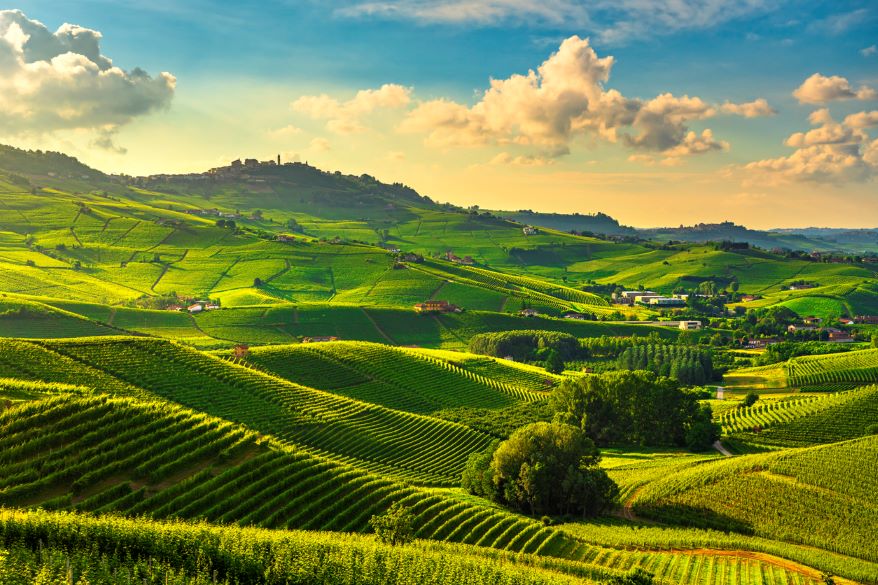
Geographical Significance
The Barbera d’Asti wine enjoys a unique position in regard to its geographical origin. The specific area it hails from, the Monferrato hills, has a combination of factors that contribute to the distinctive qualities of the wine:
- Climate: The region has a primarily continental climate, with hot summers and cold winters. This climate allows the grapes to develop high acidity levels and intense flavors, which are characteristic of Barbera d’Asti wines.
- Soil: The Monferrato soil is composed of a mix of limestone, clay, and sand, providing excellent drainage and minerals necessary for the growth of high-quality grapevines.
- Altitude: The hills where Barbera is grown have varying altitudes that have a significant impact on the grape’s characteristics. Higher-altitude vineyards result in wines with brighter acidity and lighter body, while lower-altitude vineyards produce wines with more body and a darker fruit profile.
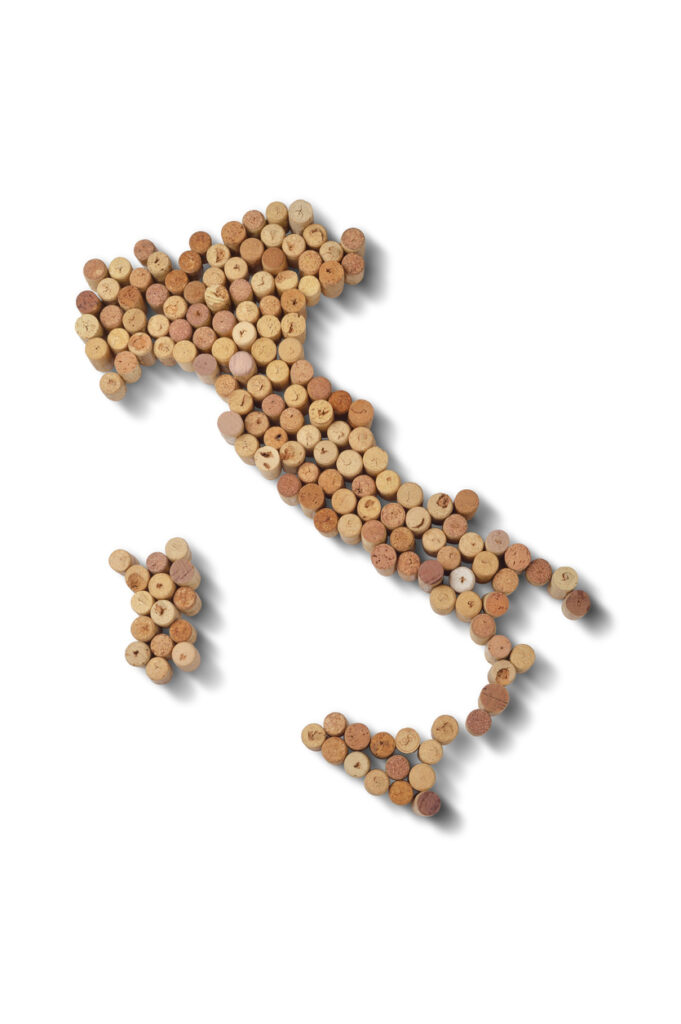
Italian Wine Heritage
Barbera d’Asti holds an important place in Italy’s rich wine heritage for the following reasons:
- Longevity: The Barbera grape’s centuries-old history attests to its ability to adapt and thrive in both vineyard and market, remaining a key player in Italy’s wine scene.
- Quality: The natural acidity and flavor of the Barbera grape make it a versatile option for creating both easy-drinking, everyday wines and more complex, age-worthy ones. In recent years, the focus on quality has increased, and many Barbera d’Asti producers have elevated their wines to compete with the more renowned Italian categories.
- Culture: Wine plays a significant role in Italian culture, and Barbera d’Asti is no exception. With its food-friendly acidity, the wine is a staple at gatherings and everyday meals, embodying the Italian appreciation for good food and drink.

Cultivation Process
Wine Grape Growing
Barbera d’Asti is a wine made from the Barbera grape, which is primarily grown in the Piedmont region of Italy. The grapes thrive in various soil types, but particularly in calcium-rich clay and limestone. The vineyards are typically planted on hillsides at an altitude of 150 to 450 meters above sea level to ensure optimal sunlight exposure.
To produce high-quality Barbera d’Asti, vineyard management techniques such as:
- Pruning: to control yield and encourage the growth of healthy vines.
- Canopy management: to ensure balanced sunlight exposure and air circulation around the grape bunches.
- Irrigation: carefully monitored to prevent excessive water stress.
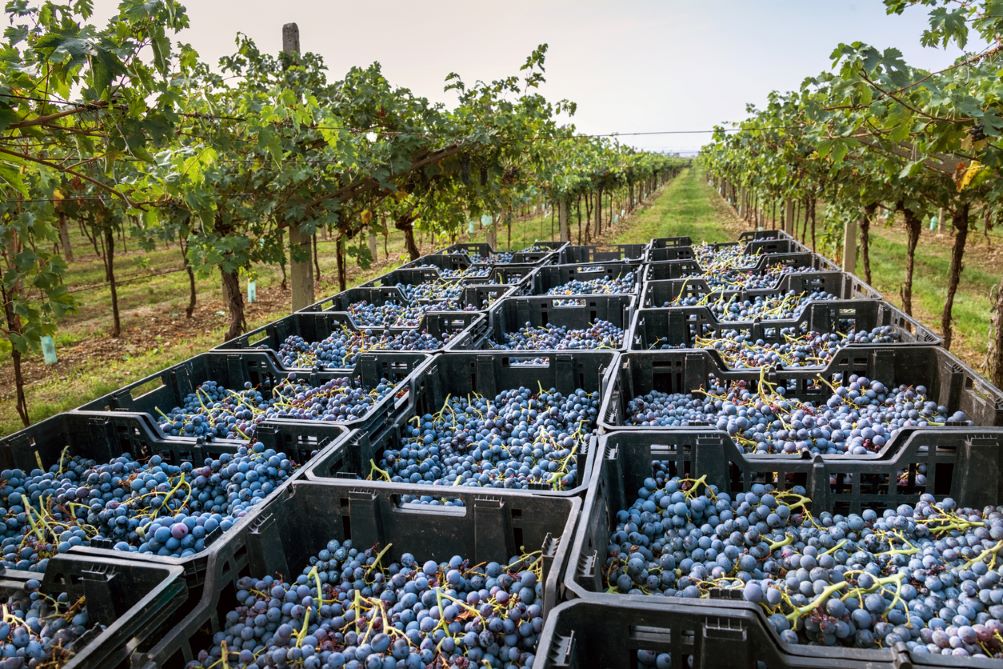
Harvesting
The Barbera grape is usually harvested between late September and early October, depending on the climate and ripeness of the berries. The following factors are considered when determining the optimal harvest time:
- Sugar level: measured in degrees Brix, which indicates the sugar concentration in the grape juice.
- Acidity: Barbera is known for its high acidity, so maintaining a balance between sugars and acids is crucial.
- Taste: Grapes are periodically tasted for optimum flavor development.
Grape harvest can either be done manually or mechanically, with hand harvesting being preferred for higher quality wines.
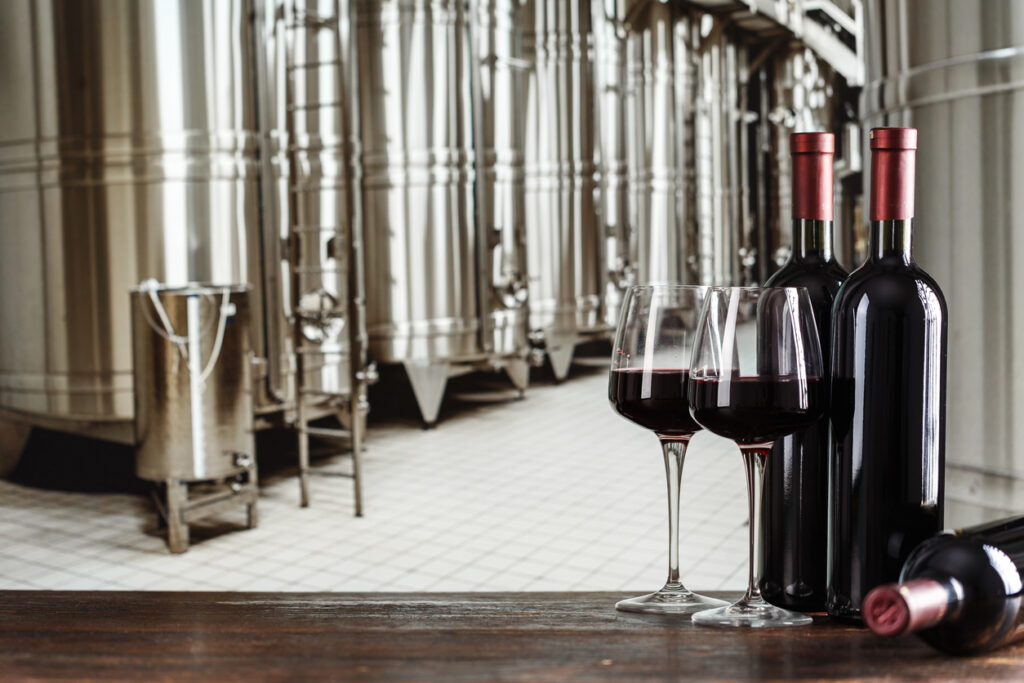
Fermentation and Aging
Once the grapes are harvested, they undergo a process called destemming, where the grape bunches are separated from the stems. The grapes are then crushed gently to break their skin, releasing the juice which is called must.
The must is then transferred into stainless steel, concrete, or glass-lined vats for fermentation. For Barbera d’Asti, selected yeasts are often used to instigate the fermentation process. The fermentation temperatures are typically kept between 25°C to 30°C to preserve the grape’s fruity character.
| Fermentation Stage | Duration |
|---|---|
| Alcoholic fermentation | 8-10 days |
| Malolactic fermentation | 2-3 weeks |
After fermentation, the wine is usually aged in stainless steel or oak barrels. Barbera d’Asti aged in oak barrels can develop more complex flavors and smoother tannins.
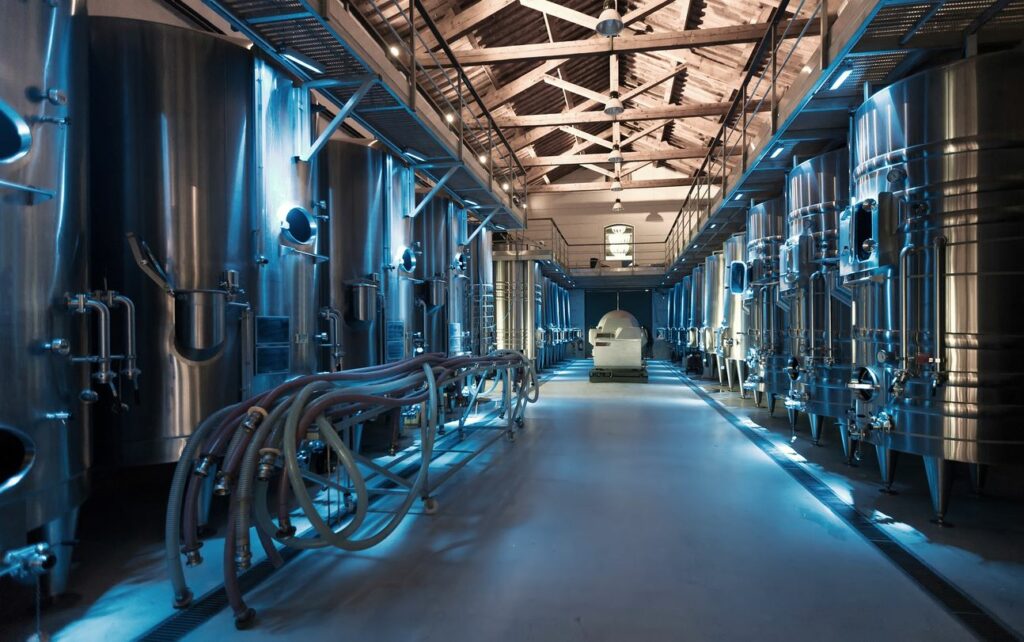
- Stainless Steel: This method preserves the original fruit character of the grape and is generally used for a fresh, more approachable style of Barbera d’Asti.
- Oak Barrels: Aging in oak barrels imparts additional flavors to the wine, such as notes of vanilla, spices, and toast. The length of time spent in oak varies depending on the desired style.
The bottle aging process varies according to the winemaker’s preferences and the style of Barbera d’Asti they intend to produce. Some wines are matured for only a few months, while others can benefit from longer aging periods, which helps to soften the wine’s natural acidity and develop its complexity.
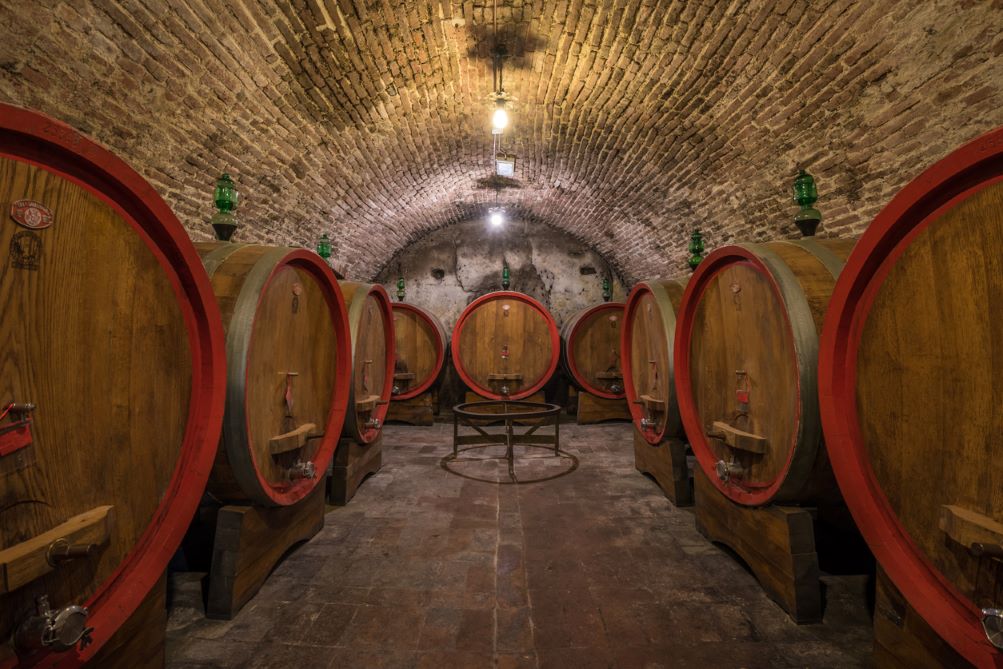
Taste Profile
Aroma
The aroma of Barbera d’Asti is characterized by its intense and complex bouquet, which entices the nose with notes of ripe red fruits, such as cherry and raspberry, underlined by delicate hints of spice like vanilla and cinnamon. Some wine lovers may also identify subtle fragrances of earth and dry leaves, creating a multi-layered and inviting aromatic experience.

Flavor
Barbera d’Asti presents a rich array of flavors on the palate:
- Fruit: Ripe cherry, blackberry, and plum
- Spice: Vanilla, cinnamon, and licorice
- Earth: Mushroom and truffle
- Secondary notes: Tobacco, leather, and cedar

These flavor characteristics may vary depending on the winemaking techniques and oak aging applied, but they effortlessly combine to offer a balanced and harmonious taste.
Texture and Structure
The texture and structure of Barbera d’Asti can be described as:
| Attribute | Description |
|---|---|
| Acidity | High |
| Alcohol content | Medium to high |
| Tannins | Low to medium, soft and well-rounded |
| Body | Medium to full |
This wine’s high acidity and medium to full body give it a vibrant and lively mouthfeel. The moderate tannins contribute to a smooth, rounded texture, while the wine’s structure and fruit intensity provide ample complexity and ageing potential. The finish is typically long, elegant, and leaves the palate with a pleasant, refreshing sensation.
Food Pairing Suggestions
Italian Cuisine Matches
Barbera d’Asti wine, originating from the Piedmont region of Italy, has an excellent versatility when it comes to food pairings. In particular, it pairs remarkably well with Italian cuisine. Here are some top Italian dishes that complement the wine:

Antipasti:
- Bruschetta
- Caprese salad
- Marinated olives
Pasta Dishes:
- Spaghetti Bolognese: The acidity of Barbera d’Asti cuts beautifully through the rich tomato sauce.
- Pesto pasta: A traditional basil pesto brings out the herbal notes of the wine.
- Risotto: Creamy and mushroom-based risottos work harmoniously with the wine’s fruity flavors.
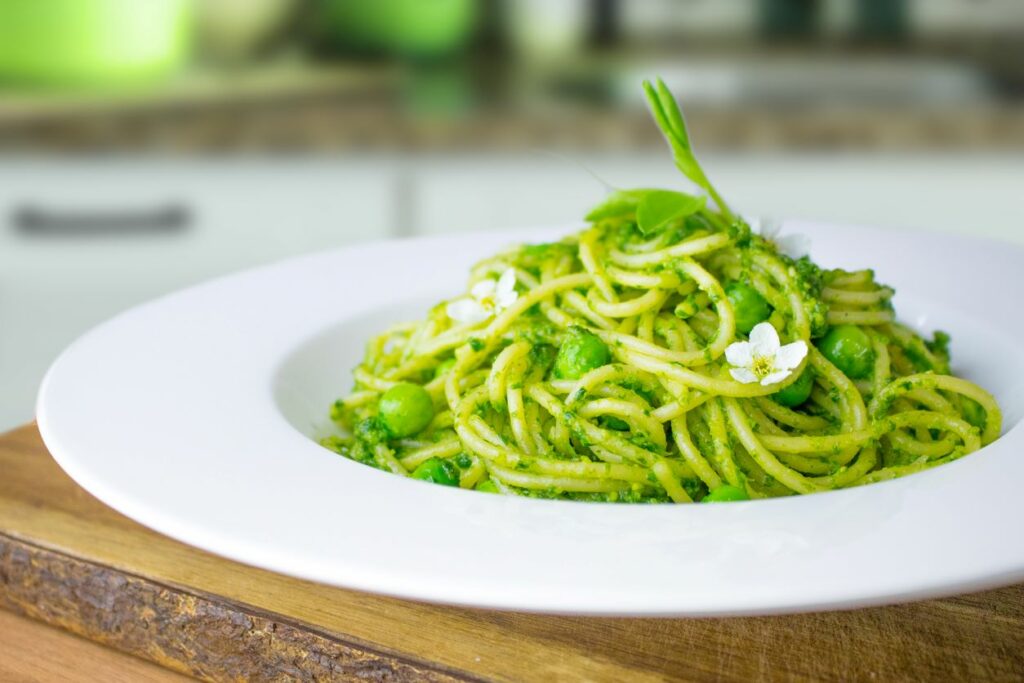
Meats:
- Grilled or roasted meats like lamb and veal
- Slow-cooked braises such as Osso Buco
- Charcuterie platters featuring Italian salumi
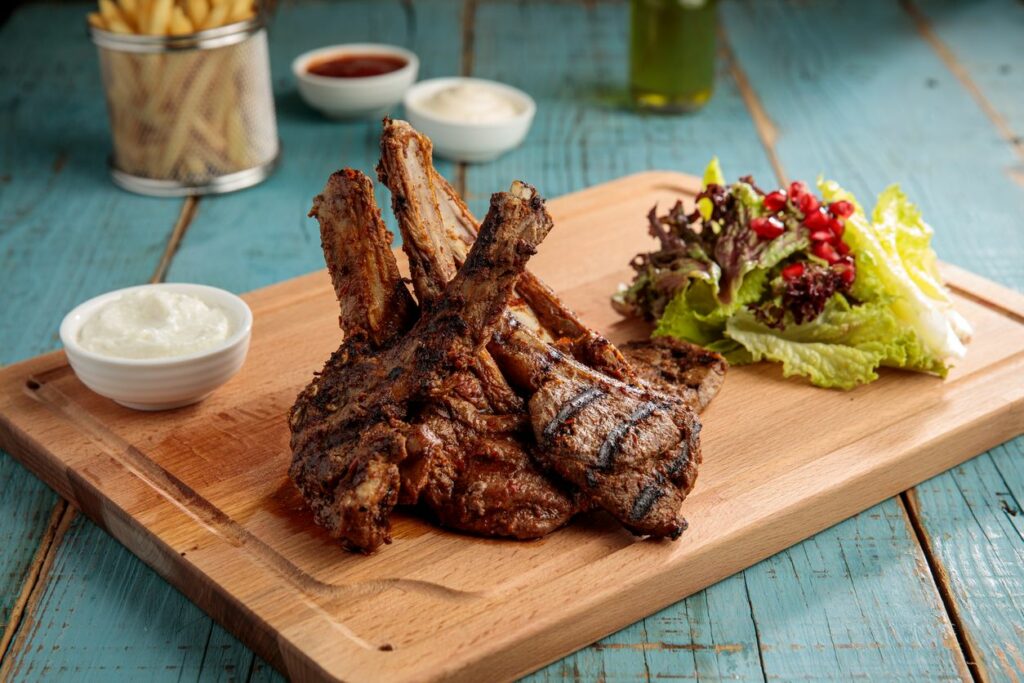
Cheeses:
- Aged Parmesan
- Fontina
- Taleggio
International Cuisine Matches
Barbera d’Asti not only pairs well with Italian food, but it can also elevate many international dishes. Here are some examples of international pairings:
Asian Cuisine:
- Dim sum
- Spicy Szechuan dishes
- Stir-fried vegetables and tofu
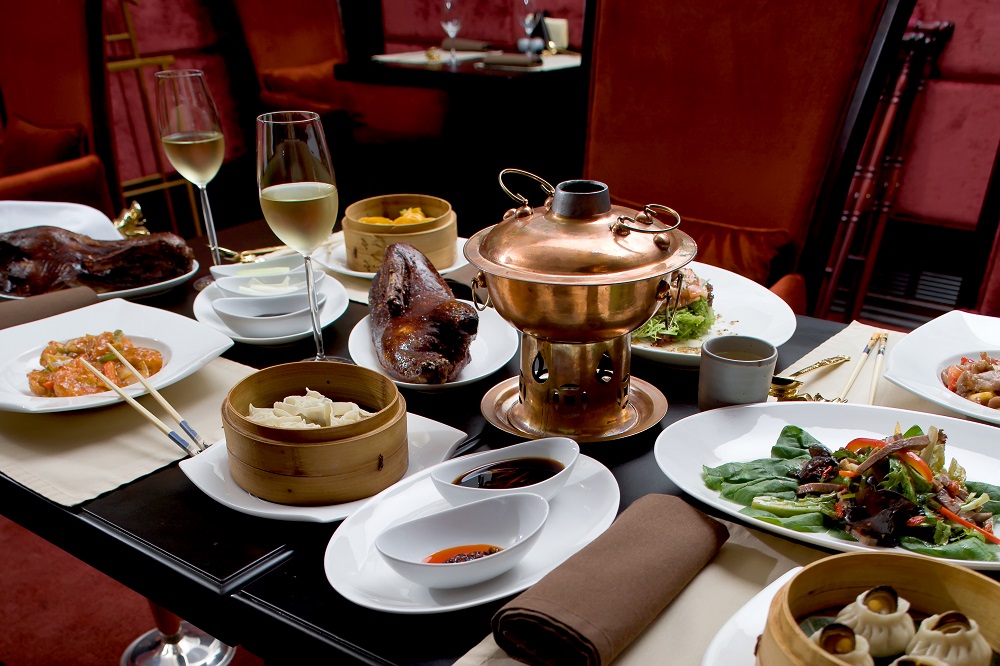
American Classics:
- Burgers with sharp cheddar cheese
- BBQ ribs
- Grilled vegetables
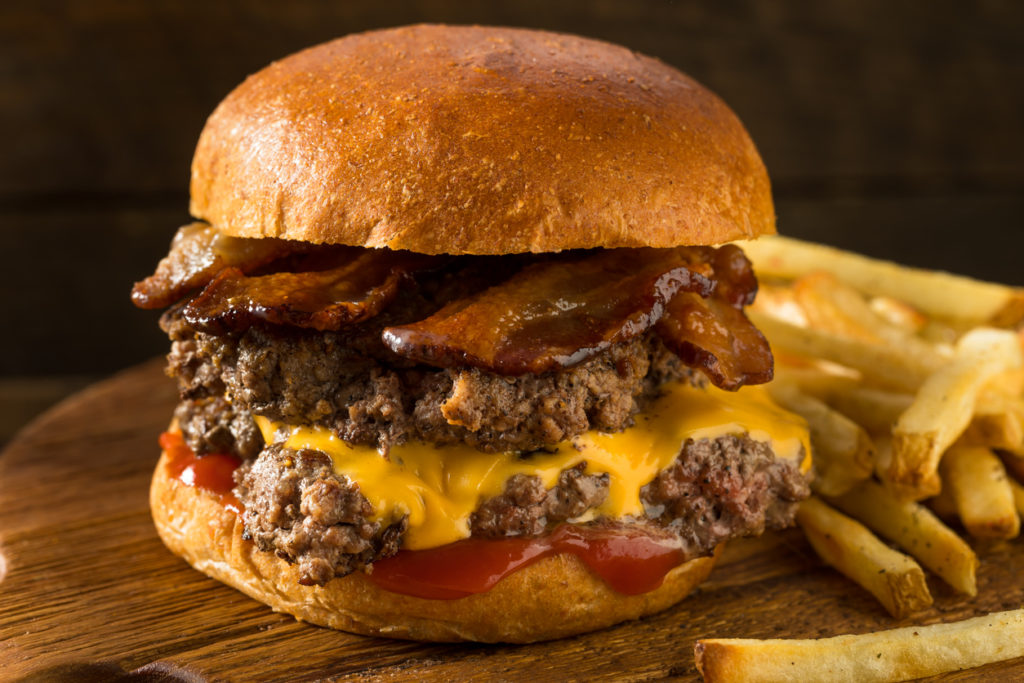
Mexican Delights:
- Fajitas
- Beef or chicken enchiladas
- Tacos al pastor
From antipasti, pasta dishes, meats and cheeses of Italian cuisine, to a diverse range of international selections, Barbera d’Asti offers a multitude of delightful food pairing options for wine enthusiasts and food lovers alike.
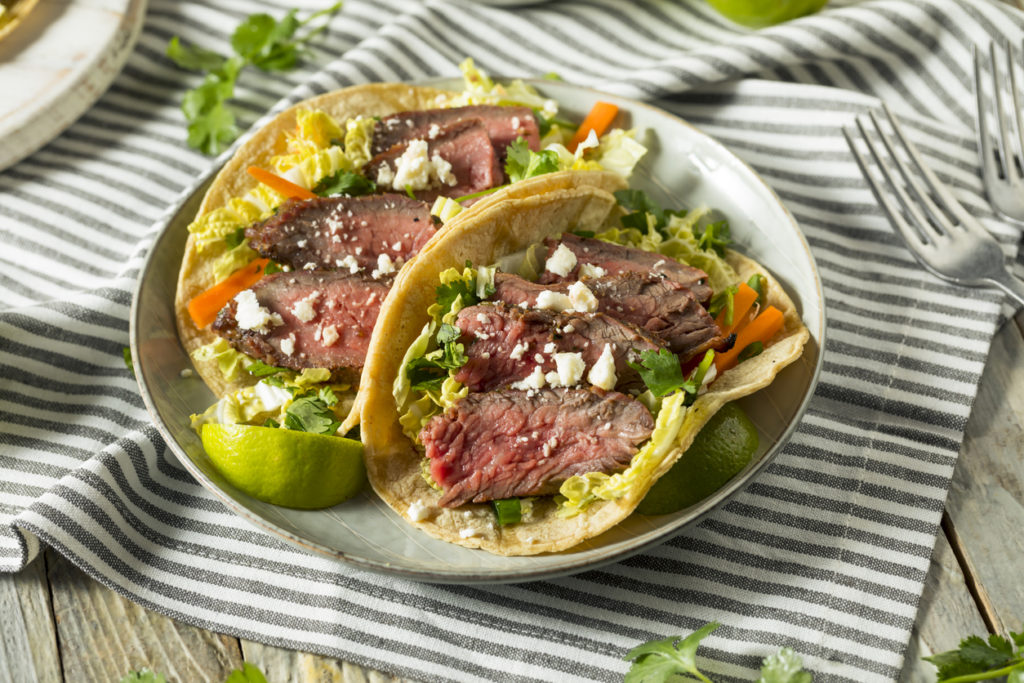
Serving and Storage
Ideal Temperature
Barbera d’Asti is best enjoyed at 16-18°C (60-64°F). Serving the wine at this temperature range allows its vibrant flavors and smooth texture to shine. Keep the bottle in a cool place, such as a wine refrigerator, before serving. If unavailable, submerge the bottle in a bucket of ice and water for 15-20 minutes before uncorking.
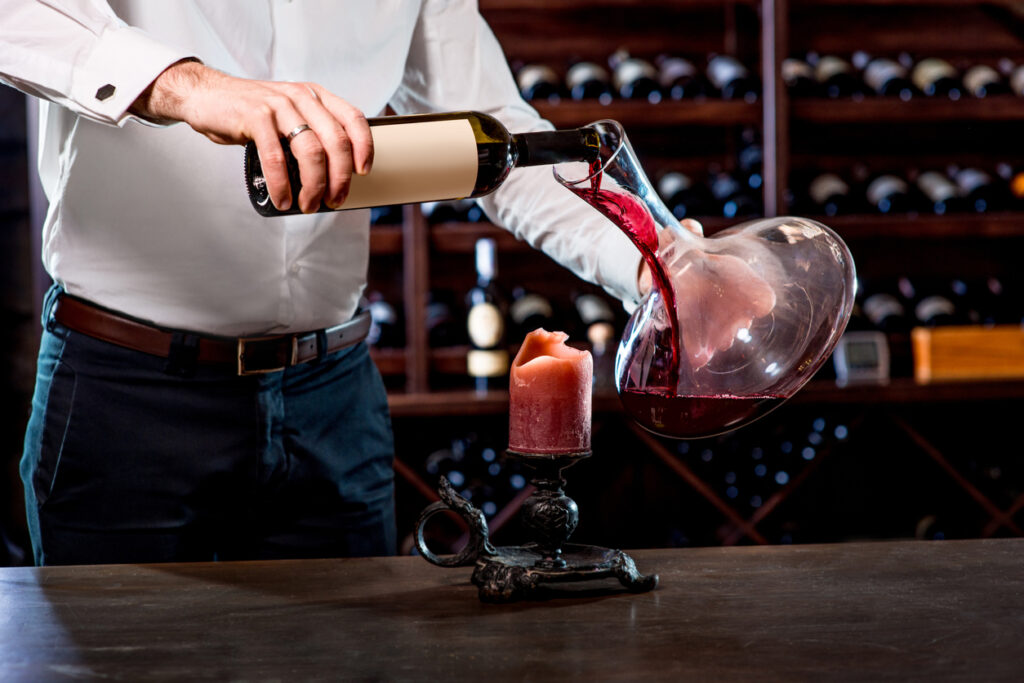
Decantation Process
It is advisable to decant Barbera d’Asti, especially for younger vintages with bold tannins. The decantation process aerates the wine, softening its tannins and allowing its flavors to fully develop. Follow these steps for proper decantation:
- Uncork the bottle gently to avoid agitation.
- Slowly pour the wine into a decanter at a 45-degree angle.
- Allow the wine to rest for 30-60 minutes. During this time, the wine will aerate, and any sediment will settle at the bottom of the decanter.
Storage Recommendations
Proper storage of Barbera d’Asti is crucial to maintaining its quality and longevity. Here are some essential storage recommendations:
- Temperature: Maintain a consistent temperature of 12-15°C (54-59°F) in your wine storage area or wine refrigerator.
- Humidity: Aim for a humidity level of 60-75% to prevent the cork from drying out and allowing air to enter the bottle.
- Darkness: Store your wine in a dark environment, as excessive exposure to light can deteriorate the wine’s quality and cause premature aging.
- Orientation: Lay the wine bottles horizontally to keep the cork moist, thus preventing it from drying out and allowing oxygen to enter.
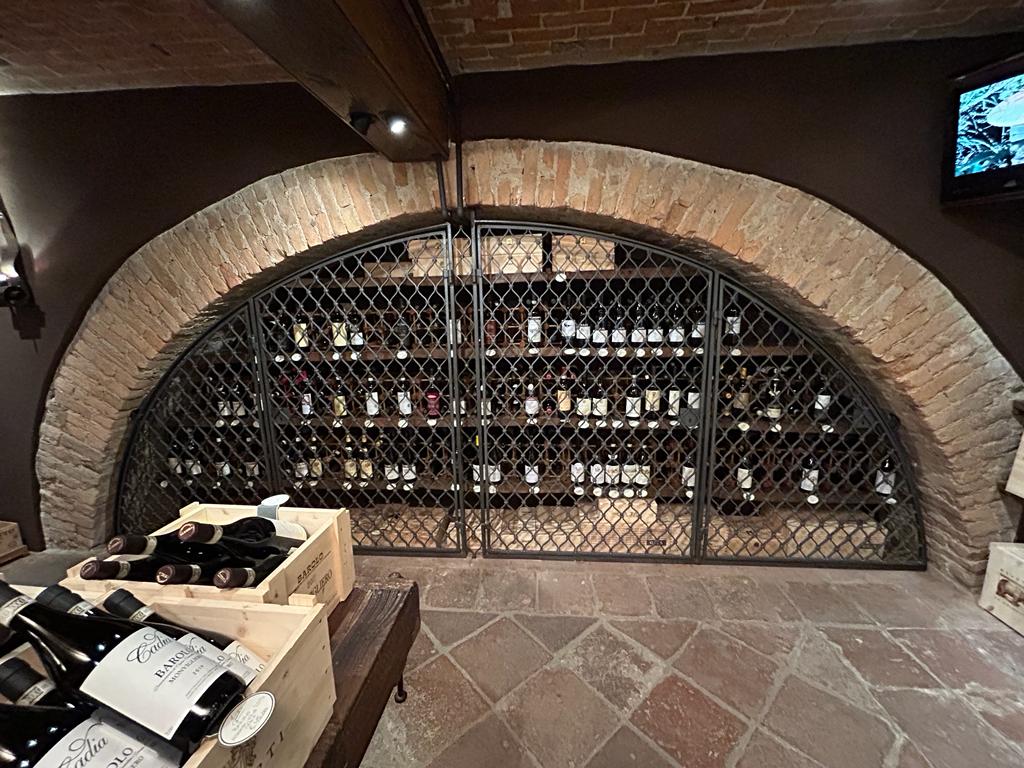
Remember that Barbera d’Asti is typically enjoyed within 3-7 years of its vintage. However, well-stored higher quality Barbera d’Asti can potentially age for 10-15 years.
Frequently Asked Questions
What does Barbera d’Asti taste like?
Barbera d’Asti is known for its bright, fresh fruit flavors, primarily notes of cherry and red berries. It often has a slightly tart, but well-balanced acidity, with hints of earthiness and subtle tannins. Aged versions may display flavors of vanilla and spice from the oak barrels.
Is Barbera d’Asti dry or sweet?
Barbera d’Asti is typically a dry red wine. Its fruity character may give the impression of sweetness, but the overall perception is more of a well-rounded, balanced profile with moderate acidity and tannins.
How is Barbera d’Asti different from Pinot Noir?
While both Barbera d’Asti and Pinot Noir are red wines, they differ in terms of origin, flavor profile, and structure. Barbera d’Asti hails from the Piedmont region of Italy, while Pinot Noir is from the Burgundy region of France. In terms of flavor, Barbera d’Asti is more fruit-forward and acidic, while Pinot Noir tends to be lighter, with more emphasis on earthy and floral notes. The tannin structure of Barbera d’Asti is also generally less pronounced than that of Pinot Noir.
What is the ideal serving temperature for Barbera d’Asti?
The ideal serving temperature for Barbera d’Asti is around 55-60°F (13-15°C). This allows the wine’s fruit flavors to shine while still highlighting any nuances from aging in oak barrels. Slightly chilling the wine also helps to further emphasize its lively acidity.
What are some suitable food pairings with Barbera d’Asti?
Barbera d’Asti’s bright acidity and fruity character make it a versatile wine for food pairings. It is particularly well-matched with tomato-based dishes, like pasta and pizza, and works well with both white and red meats. Barbera d’Asti also pairs nicely with charcuterie, aged cheeses, and earthy vegetable dishes.
Which are the best producers of Barbera d’Asti?
Some highly-regarded producers of Barbera d’Asti include Vietti, Pico Maccario, Michele Chiarlo, Braida, and Giacomo Bologna. These wineries consistently produce quality Barbera d’Asti wines that showcase the varietal’s distinct characteristics and express the unique terroir of the Piedmont region.

